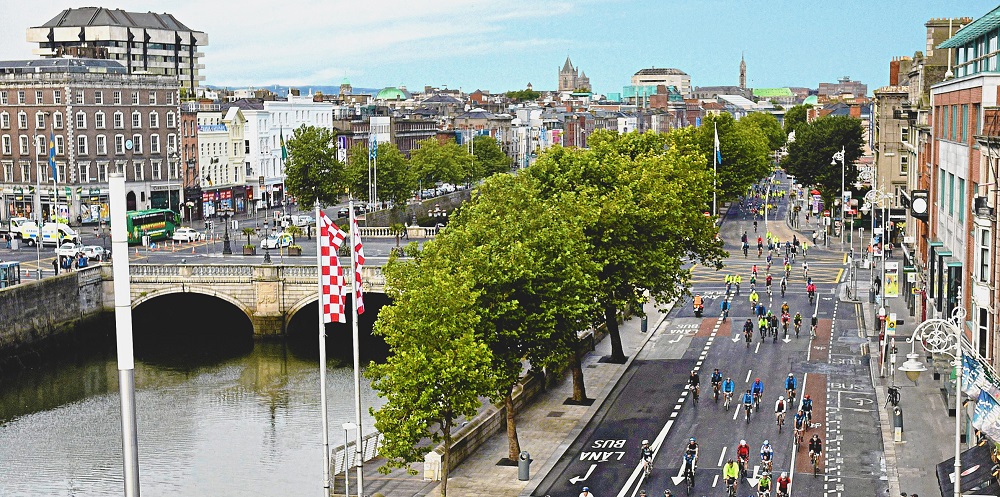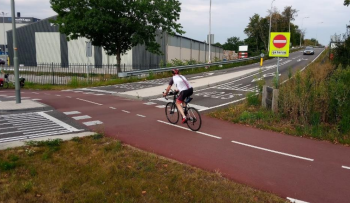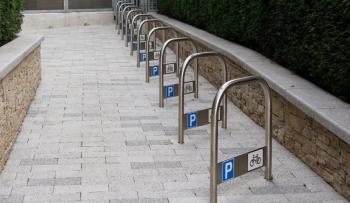
Why Cars don't Belong in Cities
By the end of September, the yearly count of fatal road accidents reached 1,000,000 victims worldwide. Europe alone accounted for 25,000 casualties, most of which included pedestrians, cyclists, and children playing in the street. In the EU, 500,000 citizens die prematurely every year because of air pollution. During this years’ International Car-Free Day, which took place on September 22nd, the heaviest pollutants produced by motorised transport were reduced by 80% in Brussels. That’s an 80% percent drop in just one day.
 Earlier in September, four people were fatally run over on a sidewalk in Berlin; just yesterday, five children between the ages of 3 and 4 were hit by an SUV in front of a kindergarten in Italy, of which 4 were injured and one is currently fighting for her life after being transported to a hospital by helicopter. Within this context, road safety improvements have basically stalled since 2013, above all for pedestrians and cyclists.
Earlier in September, four people were fatally run over on a sidewalk in Berlin; just yesterday, five children between the ages of 3 and 4 were hit by an SUV in front of a kindergarten in Italy, of which 4 were injured and one is currently fighting for her life after being transported to a hospital by helicopter. Within this context, road safety improvements have basically stalled since 2013, above all for pedestrians and cyclists.
Reports from all over the world depict SUVs as one of the deadliest means of transport in urban spaces - and yet they are the hottest new trend for the automotive industry. They water down cities’, governments’ and the EU’s great efforts to make urban mobility safer and more sustainable. Berliners for example are calling the city administration to ban them from the urban scene.
This deadly bulletin is no special edition.
It is the daily life – and death – we are choosing to accept for access to our roads. Neither is this reality an unchangeable truth. It is a matter of policy shifts, of prioritising the thriving of the many against the decadent comfort of the few; it is a matter of votes at the next local elections. Literally everywhere in Europe, brave mayors that make bold decisions are rewarded by their citizens. And they start working together to change the way our cities look, feel and function.
Nicer cities, greener cities, richer cities. Above all, safer cities. All this can be accomplished by providing benches for senior citizens, secure parking for cargo bikers, fountains and canopy shadow for joggers and their dogs… by accommodating for more than just cars in our streets and city squares. And, at least, by making vehicles, trucks and vans more fit for an urban environment.
Good news from the EU
The EU has sole responsibility over the regulation of cars and how they are manufactured. Strangely enough, this has less to do with safety and is more of a EU Single Market issue (welcome to the EU rabbit hole). Manufacturers of motor vehicles must conform to the EU Vehicle Type Approval system, a set of tests for the whole of the EU Single Market. These tests include safety and emission inspections, and recently both have been updated.
ECF followed, lobbied and eventually supported a very good European Commission proposal to improve the safety requirements of vehicles. The Parliament and Member States agreed to this proposal, and earlier this year it was passed onto the EU legislator books. With regard to safety, this means that all new vehicles from 2022 on must include:
-
Intelligent Speed Assistance with a feedback mechanism to make sure the driver knows exactly when (s)he is breaking the law and going above the speed limit. It must be stronger than a flashing light and should incorporate the accelerator pedal;
-
Automatic Emergency Braking in case of crashes with pedestrians (and cyclists by 2024);
-
Event Data Recorders that will record the few seconds of a crash;
-
Wider impact assessment areas for bonnet design testing (areas where cyclists hit cars).
There will also be a Blind Spot Detection system for all trucks to assist drivers when in close contact with pedestrians and cyclists, and (a few years later), a mandatory Direct Vision standard applied to all new truck cabs, so the driver can see around the truck.
This is a pretty impressive list of measures that should keep the car industry busy. It is a breakthrough, since many of these measures focus on the person outside the vehicle. Vehicle occupant safety measures have been very successful across the EU, with many lives saved. This is less so for those outside the vehicle, with only very passive safety measures (bonnet design testing) being featured in regulations.
For the first time, SUVs are also fully incorporated.
Our work for a safer Europe
There is still more work to be done. The various applicable measures are loosely defined in the legislation, so we need to be part of the discussion to define the precise specifications for each one of them. Most measures will point to the UN Economic Commission for Europe (UNECE) regulations, meaning ECF have to start lobbying in Geneva as well.
We expect pushbacks and attempts to weaken the regulations by (some sectors of) the motor vehicle industry. It is important that we, along with our colleagues at the European Transport Safety Council and Transport and Environment, keep pushing as well for the strongest regulation possible.
Of course, this doesn’t change ECF’s position that the best-case scenario would be fewer cars (and certainly fewer big cars!) on the road. 50% of car journeys are under 5 km, and 80% under 8/9 km. With the rise of e-bikes, most car journeys can be easily replaced by active modes of transport. That is, if we manage to actually implement the policy and regulatory changes needed to make our streets safer.
Regions:
News category:
Contact the author
Recent news!
Contact Us
Avenue des Arts, 7-8
Postal address: Rue de la Charité, 22
1210 Brussels, Belgium









